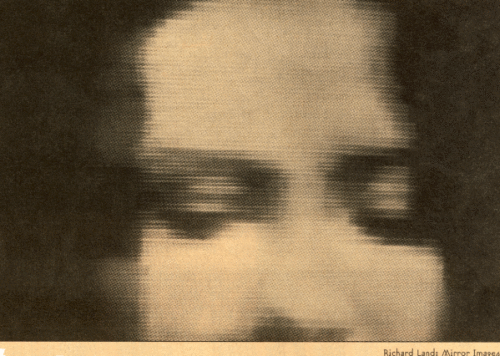V-TOPIA at the IKON Gallery
I don't know whether it was because I had seen some of the pieces on show at the IKON before, or whether general apathy has started to set in when I approach another quasi-interactive exhibit, but one room I could have stayed in for a good few hours more at the gallery was the ad-hoc reading room set up to give people background information on the historical and conceptual context of the exhibition upstairs. Here were books on topics artists were presumably influenced by, posters of the "high-tech violence of the future" - Jean Claude van Damme et. al and even preciously framed sketches of, yes, an interactivity diagram
The literature on panoramas especially, background information on the Passagen project, made Elluard and Johnstone's interpretation of it seem pretty uneventful and prosaic. Where did all that effort on the interactivity and branching structure go? Maybe I saw a sketch that was discarded later? Passagen, a hanging panoramic octagonal screen onto which a seamless, collaged surround-city is projected, is meant to transcribe Benjamin's unfinished 'Arcades Project' and create a meandering, fantastical city-experience out of different major urban centres, London, Paris etc... It is meant to recreate a sensation of that which Benjamin saw the city as - especially its subterranean spaces - a near mythical place, a concrete and very real hales that exists within the ignored epicentres of the constructed, urban world.

Image: Richard Land, Mirror Images
Rather, we get a really very simple, grandly announced descent coloured by the echoing words of Benjamin: "You are between sleep and waking" and "Every step one takes is on named ground at the end of which you feel you definitely missed something and probably didn't click at the right moment. Panoramas were precursors to film and photography, imaging technologies of sorts. Though they were painted, the desire to picture in entirety, to extend the frame around the body are clearly concerns resurfacing now with advances in both projection technologies and realtime graphics. Though Passagen was probably made using software incapable of higher feats, this is not where the problem lies. It is with the physical object in the gallery and the selection of images projected on to it. Jeff Wall's photographs of panoramas, with restoration staff looking on, have made these historical precedents clear, drawn connections over time and, it seems, space: By literally making something panoramic, you can remain as physically oblivious to it as if you were sitting on a bench looking at a badly printed postcard.
The Butler brothers' rendition of city life is somewhat different. Happy bunnies all, citizens are pictured as eager to please, trigger happy sleepwalkers of Cyberville. With a family of iconic characters (white and black bunnies) and a city made of row upon row of single room shoe-box homes, comfy lives are led watching TV and hearing the birds tweet in the back yard. Difficulties only arise when moral decisions have to be made. You are asked to answer a series of simple questions and see your decisions take effect: Capital Punishment, captives guilty or innocent, "The Dream of Freedom" is Sim city for beginner bunnies on Temazepam, with no crying over spilt milk, accidental death or lapses in judgement.
With Lynn Hershmann's "America's Finest"and Richard Land's "Mirror Images" V-topia retained the critical stance it intended to take. The organisers Tramway, in Glasgow, wanted to curate an exhibition that tackled the utopian zealousness of an emerging networked culture, cyber-infotainment and the virtualisation of certain corners of society. Having been initiated only a year ago, it is strange to think long ago that seems and how timely this exhibition was.
Mute Books Orders
For Mute Books distribution contact Anagram Books
contact@anagrambooks.com
For online purchases visit anagrambooks.com






